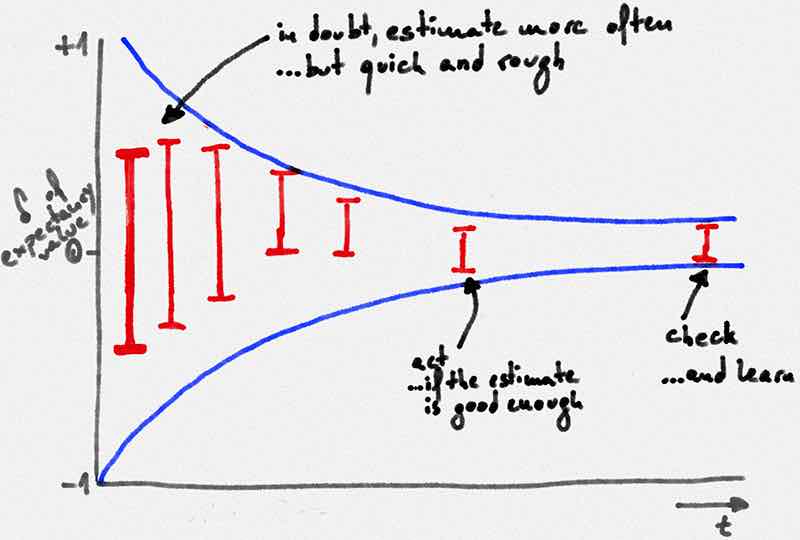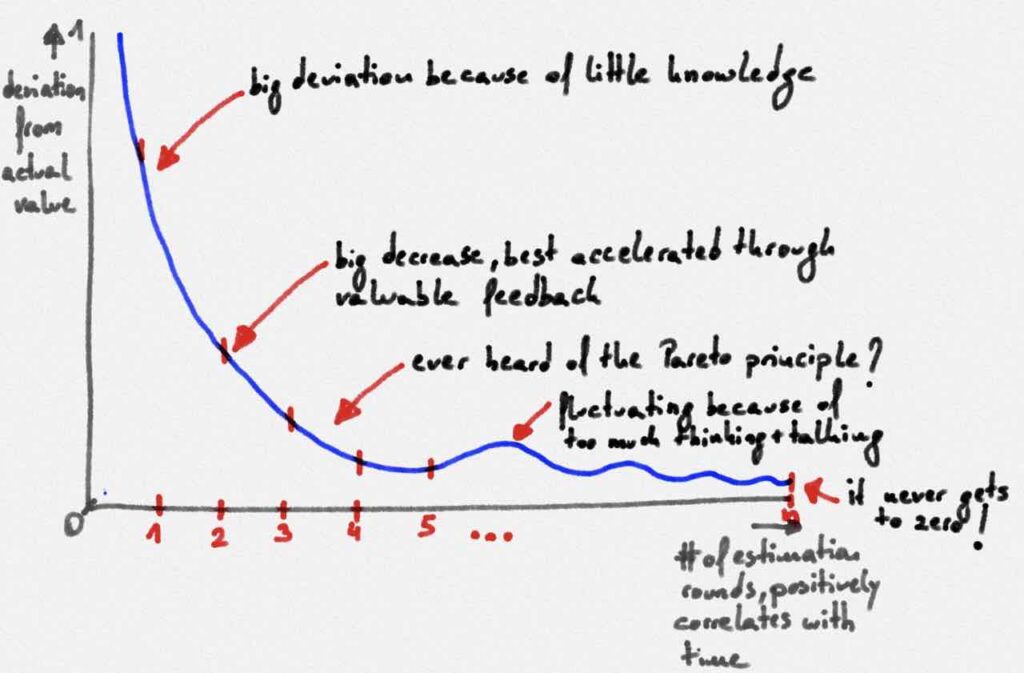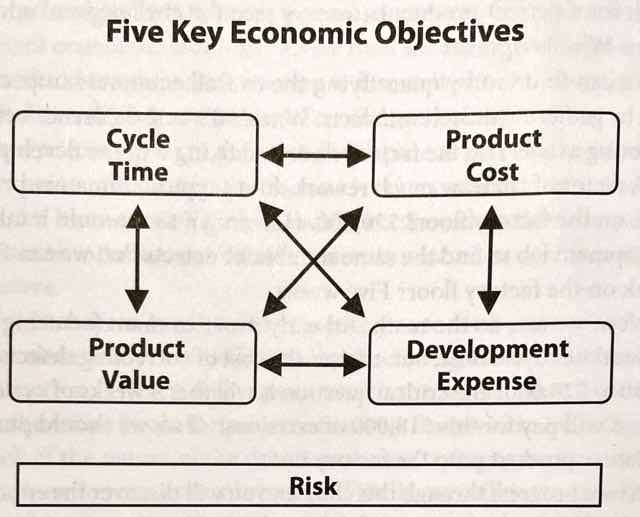This article is partly superfluous. Everyone prioritizes, constantly. Our entire lives are made up of actions based on considerations and decisions. Sleep for another five minutes in the morning? Zack, prioritized. If you don't prioritize, you simply won't survive. Not as a person and not as a species or organization.
So why is there so much discussion about priority? And, more dubious and blatant: Why do priority 1, priority 1+, priority 1*, priority 1a exist? At the same time?
The truth is, it is always prioritized. Whether or not to prioritize is not the question; there is no such thing as not prioritizing.
About the nature of priority
Prioritize is derived from the Latin prior -the one in front. Priority can refer to the arrangement of elements and/or to a chronological sequence of events.
Priorities can arise without human influence, example: Burnt hydrogen, consisting initially of two hydrogen atoms, both of which combine with an oxygen atom. The priority is therefore hydrogen-oxygen. For all those who are wondering what burnt hydrogen is: H20- water. I find it interesting why the atoms Hydrogen and Oxygen but that takes us away from the topic of the article, so I'll put it at the end.
Hey, I've just prioritized!
Unfortunately, prioritizing is rarely that easy. If it were at least complicated, then people could agree on an exact order after a headache. However, prioritization is usually necessary in complex conditions.
Complexity characterizes the behavior of a system or model whose components interact in multiple ways and follow local rules, meaning there is no reasonable higher instruction to define the various possible interactions.
Johnson, Steven (2001). Emergence: The Connected Lives of Ants, Brains, Cities. New York: Scribner. p. 19. ISBN 978-3411040742. From wikipedia.com, last assessed 2022-04-08
This means that an order must be created, although it is not known how all the elements, decisions and dynamics will interact. The result cannot be determined in advance, unforeseen events can certainly happen.
Sound familiar from your work? That's exactly what makes prioritizing difficult. And important, because a good priority makes all the difference.
What is a good priority?
Easier written than done. What is a good priority?
A priority that...
...is clear: there is a clear sequence for the prioritized elements.
...delivers the highest expected value: Benefit (impact), cost and risk should be taken into account. All three must be defined, see Principle 1.
...is accepted: In order for the priority to remain consistent, it should be negotiated with the stakeholders who have an influence on the prioritization, see Principle 3.
Three and a half principles for prioritization
How do I achieve a good priority?
1. prioritize alternatives, act in a focused way.
Every decision is a separation. That's why it's called that. Every decision separates the many possibilities and the future from one another. That reads so banal. Unfortunately, I often encounter situations in which separation anxiety reigns supreme.
The team has drawn 42 story points (SP), although the velocity was last at 37 SP? They'll manage that! The Agile Release Train has a capacity of 450 SP but a load of 491 SP? Must be finished! These are real examples.
The idea behind some of this is that doing everything also gives you more leeway. And doing more leads to more finished work. Unfortunately, the exact opposite is the case. The more alternatives are pursued, the fewer are completed - mathematically simple and irrefutable by Jason D. Little explained.
Here is a catchy video by Henrik Kniberg on the subject:
The alternative to the alternatives? First of all, it's great that they're all here! The more the better, after all, they are all ideas. There should only be one procedure for selecting the next one.
Steve Jobs' return to Apple began with a radical refocusing of the product portfolio, a cornerstone for the company to deliver what it has delivered so far.
I am as proud of what we don't do as I am of what we do.
https://www.goodreads.com/quotes/476123-i-m-as-proud-of-what-we-don-t-do-as-i; last assessed 2022-04-08
-Steve Jobs
The alternatives should be examined repeatedly and the most important ones prioritized. Contrary to some opinions, not every alternative has to be prioritized. A backlog must be prioritized where it is relevant to the decision.
On the other hand, it makes little sense to create alternatives that have no value. After all, each alternative should have an impact. And prioritization should be based on the expected effect. You can read more about this here.
So if as many alternatives as possible are to be included and then prioritized, two questions arise. How and when? First comes the when, followed by the how in the third principle.
2. prioritize as late as possible and as early as necessary.
The title of the principle says it all: the art lies in finding a balance. Not to prioritize too early if the necessary information is not yet available - and this is brought in from "outside" - only so that decisions that lead to action can be made. Do not prioritize too late so as not to delay action.
The time between clear priority and completion should be as short as possible. This lead time is crucial for ensuring that expectations and results are close together. And thus even for realizing the added value of prioritization.
It is better to be roughly right than precisely wrong.
https://www.goodreads.com/quotes/265041-it-is-better-to-be-roughly-right-than-precisely-wrong, last assessed 2022-04-08
-John Maynard Keynes
The solution?
Estimate alternative courses of action roughly at first, but more frequently. Initial estimates may well have a magnitude of 50%. Specifically: According to the first estimate, the project can cost between EUR 7.5 and 12.5 million. The next estimate then only has a magnitude of 30% and so on, up to an estimate that has a magnitude of 10%. In the example above, this means EUR 9.5 to 10.5 million.

So it's better to estimate more quickly and see whether the first estimates already allow prioritization. Probably for the majority of decisions. More precise estimates may be more complex.
The deviation decreases from estimate to estimate because time passes in between. Time that can be used for insights. Time for feedback, the better, the more the deviation between the expected and actual value decreases. In rare cases, the deviation will be zero, so at some point it's time to stop estimating. Experience shows that a fluctuation around the expected value even begins after a certain number of runs. Quite simply, there is too much talk and too little action!

This argument is of course theoretical. The extent of the deviation can only be determined afterwards. And how precisely some actual expenditure can be measured...well, that's a topic in itself.
3. prioritize comprehensibly, adapt the procedure.
If prioritization does not take place in a vacuum, but in organizations, then it should not only be clear, but also accepted.
Negotiability ensures acceptance, and prioritization by those with the best expertise ensures quality.
The product value should be determined by those who best understand the customers. Attention, this does not necessarily mean that the customers themselves determine this. To paraphrase Henry Ford, people would have attached the greatest value to faster horses. Jobs to be Done is a suitable technique.
The development effort should be estimated by those who are most familiar with the implementation. These need not only be the people who actually implement it. Sometimes these people of all people have a distorted perception. Or several of them.
So what is needed for priority in the entrepreneurial context is a decision-making model that takes into account the decisive (see what I did here?) factors.
Isn't there something? Yeah, sure:

Priority is therefore measured by a combination of these five arguments. Weighted Shortest Job First (WSJF) is an estimation method that incorporates these five arguments. You'll read more about this next time, in more detail. It's worth sticking with it. I promise!
The estimates should be relative, which has several advantages. It is faster, especially in groups. It is more accurate, especially in groups. Unfortunately, it doesn't feel that way.
In any case, these decision-relevant arguments should be known to all those who can also exert a direct influence. An accepted prioritization procedure provides security to continue with a prioritization because the priority becomes comprehensible. At the same time, transparency about the procedure enables criticism and thus corrections and improvements.
Whether the prioritization procedure is appropriate should therefore be checked from time to time. There's also a ritual for this, called retro-something.
31/2 Prioritize with attitude
The last half chapter refers to the critical factor in prioritization. The people. Oh, how easy (and boring) it would be without people!
Relax, it's wrong anyway. You won't find the perfect priority, you'll know better afterwards. It is always the current state of error.
Be prepared to negotiate. On the way to a good priority, you should ask for feedback. Be prepared to change your evaluation. Dissent is therefore positive: several people, several perceptions, several evaluations.
Be ready to act. At some point, all the thinking and talking has to stop. The benefit of every further investigation, the next estimate, the new insight tends to diminish. And doing is usually better than waiting. Try increments, it's much easier to prioritize.
One last bon mot: If you don't prioritize your actions, you will be prioritized by events.
What is your trick for prioritizing well?
How do you prioritize? What do you pay attention to? What is your attitude?
How do you prioritize in your area/your company?
We are giving away a half-hour focus coaching session with the author among all comments!

Write a comment